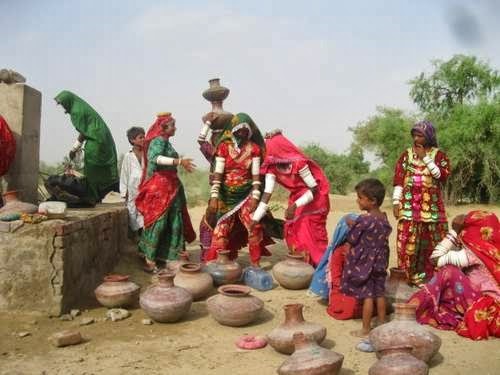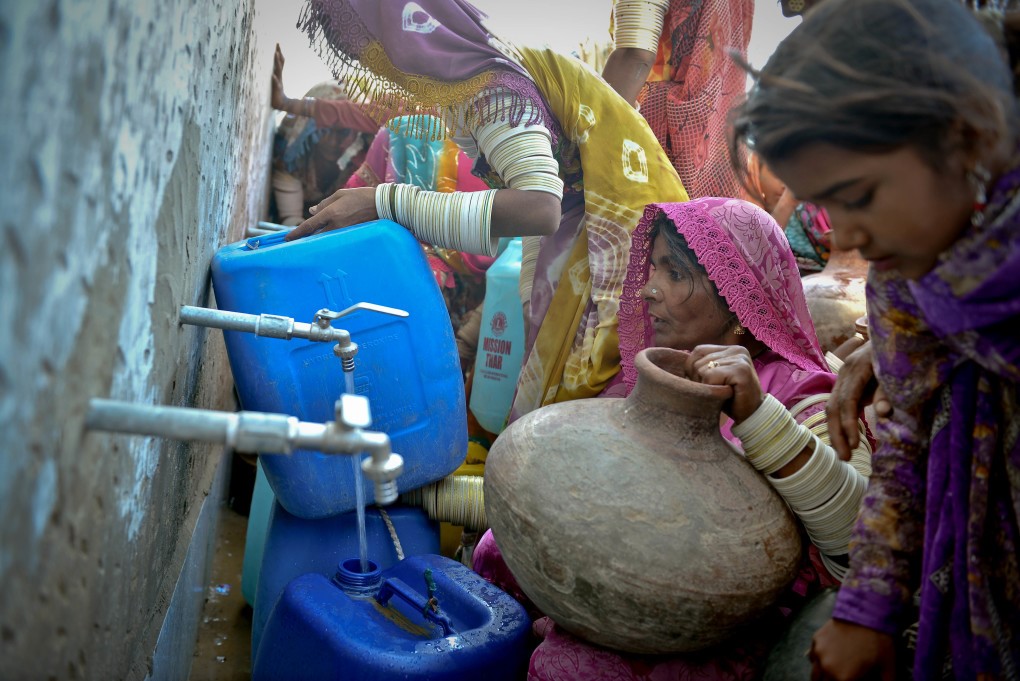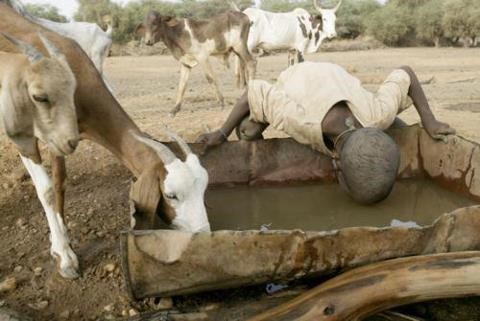By Nasser Rizvi
Your four- year old daughter dies from a water- borne disease, and the hospital refuses to help you transport her body back to your home village. This was the dreadful experience of Mohammad Hassan Kapri, whose young child Shahzadi died soon after reaching the hospital in the Thar region of Pakistan, the south Asian Islamic republic located between Afghanistan and India. At least fifteen other parents shared this grief as an outbreak of water- borne diseases in the Thar Desert sent hundreds into hospitals in the past few weeks.
 Located between Pakistan and India, the Thar Desert, also known as the Great Indian Desert, is an arid region of the Indian Subcontinent, home to thousands of Hindus, Muslims, and Sikhs. The Thar Desert is the most densely populated desert in the world, with a population of 83 people per km^2. However, the living conditions for the numerous inhabitants here are brutal. For years now, the region has experienced a drought that has taken a major toll on its communities. Malnutrition, shortage of clean water, as well as poor hospital and school conditions contribute to the residents’ lack of basic life necessities.
Located between Pakistan and India, the Thar Desert, also known as the Great Indian Desert, is an arid region of the Indian Subcontinent, home to thousands of Hindus, Muslims, and Sikhs. The Thar Desert is the most densely populated desert in the world, with a population of 83 people per km^2. However, the living conditions for the numerous inhabitants here are brutal. For years now, the region has experienced a drought that has taken a major toll on its communities. Malnutrition, shortage of clean water, as well as poor hospital and school conditions contribute to the residents’ lack of basic life necessities.
The famine-like conditions can be attributed to the climatic and ecological conditions in the area. The annual rainfall in the Thar region is less than 250 millimeters; every ten years the region experiences a two to three year drought, during which hundreds of individuals, primarily children, fall ill and die. This ten-year cycle has been occurring for ages, each drought killing as many as the last. The populations’ primary source of water is wells 200-300 meters deep, from which contaminated water is frequently consumed, causing disease, mainly in children. Yet, despite these life-threatening conditions, the Sindh government – Pakistan’s unicameral system of government located in its capital, Karachi – concentrates its funding on cultural events and official tours for country leaders, only to exacerbate the situation.
While Thar Desert’s climate conditions are uncontrollable, the inhabitants’ living conditions can be improved through better political strategy such as efficient and prioritized allocations of funds. Critics such as Nida Paras, chief officer of Progressive Youth Forum Pakistan (PYF), an organization dedicated to developing leadership skills in youth in areas such as the Thar desert, justifiably blame the Sindh Government for the living conditions in the region. Paras claims that prior to elections, government leaders won the votes of the poor by making promises for their welfare “…but when they are elected they have nothing to do with the people, their problems or their welfare.”
Furthermore, political leaders of the Sindh province have provided unsubstantial excuses such as asserting that the death of children in Thar is not a result of the drought or malnutrition, but of disease. Such claims, however, do not explain evident signs of malnutrition such as rapid weight loss, dehydration, and frail builds that Thari children exhibit. Moreover, while the cause may indeed be disease, the illnesses stem from a lack of purified water, a product of poor governing. Nonetheless, if these deaths are due to disease then there should be an adequate number of well-equipped facilities to help these victims. Such logical discrepancies illuminate the irresponsibility of those in power and how the cost of such carelessness is at the expense of the Thar people’s lives.
A few years ago—when similar conditions in Thar claimed the lives of hundreds– fingers were pointed towards the government, and the leaders defended themselves by introducing a $33 million water purification plan. This project involved 750 purification plants that utilize reverse osmosis to purify the underground water in the desert, providing clean water for hundreds of thousands of people. Two years later, however, the region has continued to experience water- borne diseases that are hospitalizing hundreds and killing children due to local plant workers’ inability to sustain the technology. Employees in various villages that were hired to run the plants never underwent proper training and thus were unable to troubleshoot when it was necessary. While the concept had potential, failure to maintain the technology hindered implementation, another reflection on the politicians’ shortsightedness.
 It is in the government’s best interest to begin focusing their attention on their people before it is too late. An effective strategy that provides long-term relief rather than temporary fixes is crucial to save the individuals struggling to survive in the harsh conditions of the Thar Desert. Rather than spending money on massive culture events and unnecessary country tours the leaders must direct their budgets towards basic life necessities. They must improve their people’s living conditions and ultimately save their lives via efficient programs, responsible fund allocations, and effective political strategies. Such strategies must not only possess the technology to purify water but also be sustainable. Political leaders must also ensure that local workers are adequately trained to maintain the water purification plants once implementation has occurred.
It is in the government’s best interest to begin focusing their attention on their people before it is too late. An effective strategy that provides long-term relief rather than temporary fixes is crucial to save the individuals struggling to survive in the harsh conditions of the Thar Desert. Rather than spending money on massive culture events and unnecessary country tours the leaders must direct their budgets towards basic life necessities. They must improve their people’s living conditions and ultimately save their lives via efficient programs, responsible fund allocations, and effective political strategies. Such strategies must not only possess the technology to purify water but also be sustainable. Political leaders must also ensure that local workers are adequately trained to maintain the water purification plants once implementation has occurred.
In addition, for those who have fallen sick, an increase in health facilities and employees is in demand in the Thar area. The government must acknowledge the lack of transportation amongst the majority of the Thari people and compensate by allocating funds towards the construction of hospitals. If the Sindh government does not begin taking responsibility then it will not ¬be long before drought and disease consume the Thari people and no political strategy will able to help them.

